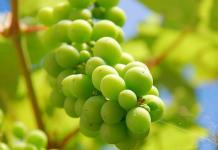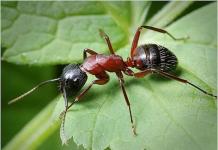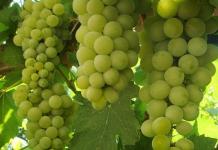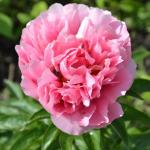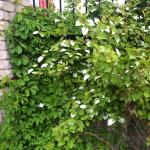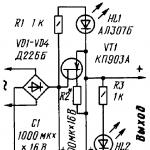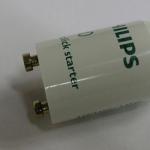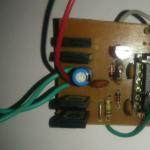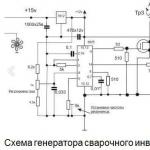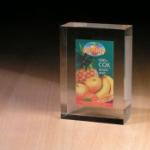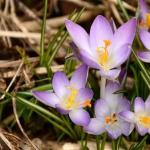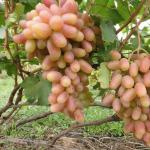Familiar to many gardeners fruit vine of the Far Eastern forests - actinidia, which grows wild in the taiga of the Primorsky Territory, the Amur region, in the south of Sakhalin and the Kuril Islands. However, this very decorative vine with surprisingly healthy fruits can rarely be found in garden plots.
It grows here Actinidia of three species. The most frost-resistant of them - Actinidia kolomikta (local names - raisins, raisins, Amur gooseberries) has found its place in the gardens of the Non-Black Earth Region of the European part of the USSR. It can be found in botanical gardens and among amateur gardeners in almost all areas of the country.
Description of the species of actinidia liana
The liana reaches 10-15 m, twining around a supporting tree or shrub. Its bark is dark brown, with small white lentils. The leaves are simple, entire, from elongated oval to round in shape. The flowers are single or collected in groups of two or three, with large petals and yellow stamens. Plants can be male, with staminate flowers, or female, with functionally female flowers. In the latter, the pistil with stigmas diverging like rays and small stamens are well developed.
A few days before flowering, the leaves of male plants begin to turn white at the top, then turn crimson. Such variegated leaves give the vine an exclusively decorative appearance.
Actinidia berries They have an elongated cylindrical shape, when ripe they become dark green, their weight is 2-3 g. They are very tender, soft, sweet and sour, with a strong pineapple aroma. Each berry contains up to 90 small seeds, imperceptible when chewed. In terms of raw material, the berries of Actinidia kolomikta contain 1000-1100 mg% of ascorbic acid (the highest amount of vitamin C among berry plants). When stored in dried form or in jam or juice, the content of ascorbic acid changes little. In addition, actinidia berries contain up to 10% sugar and 1-1.5% organic acids.
Actinidia arguta (sharp or large) is somewhat less frost-resistant, but bears fruit well south of the Moscow region. This is a powerful vine, reaching a height of 17-20 m.
It is distinguished by light brown bark and large glossy dark green leaves. It has flowers with white petals and black stamens. The fruits are relatively large, green in color, weighing up to 7-10 g, very pleasant to the taste, with a strong pineapple aroma. They contain 100 mg% ascorbic acid, up to 10% sugar and 1% organic acids.
Actinidia polygamum, the most heat-loving of our actinidia, has a reddish-brown bark with white, long, sparse lentils. It is distinguished by its variegated leaves and orange fruits, which taste like red bell peppers. In its homeland this plant is called pepper.
Actinidia propagation by seeds
Actinidia comes into season fruiting in the fifth or sixth year after planting and produces harvests annually. It can be propagated by seeds and cuttings. Seeds are sown either before winter, or, after pre-sowing preparation of seeds, in the spring (duration of pre-sowing stratification is 4 months). Only freshly collected seeds should be used for sowing, without subjecting them to fermentation. The seeds should be washed from the berry pulp and placed in a saucer of water for four days. Then place them in a nylon cloth and bury them in damp, clean, calcined sand in a wooden box with holes in the bottom.
The seeds should be kept moist in a room at a temperature of 18-20° for two months. Remove them from the sand weekly and ventilate them. Then bury the box with the seeds deep under the snow, but so that they do not freeze. The seeds should also remain under the snow for at least two months. In the spring, take them out from under the snow and keep them for two weeks in a cool room at 10°. At this time, the seeds begin to crack and can be sown in seed boxes with soil. Sow shallowly, in furrows, planting no deeper than 0.1 cm.
Actinidia seedlings are very small, similar to weed seedlings. During this time, water them frequently and protect them from direct sunlight and keep them at room temperature. Seedlings in the phase of three or four true leaves are planted in boxes or cold greenhouses. With the onset of warm days, in June, it can be planted on the ridges.
In the first years, cover the seedlings for the winter with fallen leaves and spruce branches. Then plant the plants in a permanent place in the garden. Basically, seedlings require moisture, well-drained soil and partial shade.
Actinidia propagation by cuttings
Actinidia can be rooted green summer cuttings. Cut them when the shoots begin to grow, when they begin to turn brown from below. Such semi-lignified cuttings are cut “with the heel,” that is, with part of the old shoot. Rooting should be done with constant moisture in boxes or in cold greenhouses. Pests do not damage actinidia, but it often suffers from cats, so young plants need to be protected from them.
The fruits of actinidia are incomparable in their excellent taste. They are rich in vitamins (vitamin C is 15-20 times more than in lemon) and pectin substances.
At one time I read from I.V. Michurin that “in the future, actinidia, in terms of the quality of its fruits, its resistance to various diseases and pests, and its ability to avoid damage from late spring morning frosts by late flowering, will completely displace grapes...”, and decided to grow this crop. I sowed the seeds sent from the Far East, but they did not germinate. True, the seeds were very small and, perhaps, were buried too deep during watering. And in the fall of 1966, she planted the crushed fruits of Actinidia kolomikta in boxes and left them to winter in the garden, covering them with dry leaves. Planted in rows to a depth of 0.3-0.5 cm. In May - June, shoots appeared, and in bunches (from each berry).
The first year the seedlings grew very poorly. In the fall, I selected the tallest and strongest ones and planted them separately, sparsely, at a distance of 0.5 m from one another. In the third year, they began to grow so actively. that over the summer the vines lengthened by more than a meter and gave off lateral branches.
In the fourth year, the plants bloomed and bore very large fruits, 2.5 times larger than ordinary kolomikta fruits.
A few years ago, actinidia entwined a frame made in the shape of a gazebo. The vines have grown to 10-15 m. The harvest is large, all the branches are strewn with berries, but caring for actinidia has become inconvenient. And I shortened the vines to 1.5 m, and sent those that were longer to grape-type trellises.
I placed the trellises under the apple trees and soon became convinced that actinidia was doing well and was still bearing fruit. I now grow all actinidia plants on a trellis. I cut off the ends of vines that are too long. The plant tolerates transplantation well even at 15 years of age.
Use of actinidia fruits
Actinidia is winter-hardy: after the winter of 1978/79, when frosts reached 38°, it not only did not die, but also bore fruit normally. I didn’t notice any pests or diseases on it.
I use the entire harvest. I cover the fruits with sugar. I wash them first and place them in a three-liter jar, sprinkling them with the same amount of sugar. I close it with a plastic lid with an eyelet.
A lot of juice comes out (about 1/2 a can). The fruits are rising. From them I prepare compotes, and from the rest of the contents of the jar, diluting with water to taste, I make drinks.
After drinking this drink, I feel invigorated, my performance increases, and my digestion improves.
Actinidia covered with sugar can be stored for two to three years.
I advise everyone to grow this beautiful plant.
Actinidia cultivation and care
I have been growing Actinidia kolomikta for ten years, ever since I was sent seeds from the Vladivostok Botanical Garden. I received the seeds in April and stratified them for four months. I sowed it in early September right on the ridge located on the north side of the garden house. I first dug it up using a spade, adding manure and leaf humus, as well as wood ash (I did not add mineral fertilizers).
I covered the seeds with leaf humus to a depth of no more than 0.5 cm. The shoots appeared promptly in the third decade of May the following year. After the formation of 4-6 true leaves, the seedlings were picked at a distance of 10-15 cm from one another.
In the first summer, I strictly ensured that the soil was always moist and the seedlings were not in direct sunlight. While Actinidia kolomikta plants are young, they attract cats, from which they have to be protected. To do this, I built a low frame and covered it with a metal mesh.
Since actinidia seedlings appear late, there is a need to protect them from trampling and to be able to loosen the soil without harming the germinating seeds. I took this into account. He sowed the seeds in furrows made in the direction from east to west, at a distance of 15-20 cm from one another, and retreating from them by 5-6 cm on the south side, parallel to them, he sown dill in rows late in the fall. Early spring sprouts of dill allowed me to determine the location of the grooves with actinidia. It is also positive that the dill protected actinidia seedlings from direct sunlight.
In the summer, in order not to damage the actinidia, I did not weed out the weeds, but in the fall, when they withered, well-rooted, lignified seedlings 10-12 cm high with characteristic thickenings at the ends of the vines remained on the ridge.
For the first three years, during the winter, I covered them with a 15-20-centimeter layer of fallen birch leaves, which I subsequently used to obtain humus.
I planted seedlings in a permanent place in partial shade at two and three years of age (which is better), in early spring. Some plants, transplanted carefully, with a clod of soil, bloomed the same year.
I tried to create conditions as close as possible to those in which actinidia grows in the taiga: partial shade, a layer of rotted plant debris, and plenty of moisture. Therefore, I introduced a lot of humus and wood ash into the soil. I prepared pits in the fall with a depth and diameter of 0.7-0.8 m, placing them at a distance of 2-2.5 m. Broken brick was laid in a layer of 20-25 cm in each pit for drainage.
After planting, only one shoot was left and the rest were removed. I immediately installed supports - metal pipes three meters high. Further care boiled down to watering, weeding, sprinkling in dry times.
In order not to damage the roots, which are located superficially on the actinidia, I did not loosen the soil either in the first or subsequent years, but annually I added 2-3 buckets of humus to the trunk circle of each plant. He added wood ash, eggshells, small bones and half-rotted dead wood as fertilizer.
Actinidia pruning
Plants I systematically trimmed at the end of sap flow - in the conditions of the Southern Urals, as a rule, in the second half of October. The main vines, older than three years or damaged during pruning, were replaced with others, always keeping in mind that the side vines extending from the main vines produce a larger harvest and the fruits on them are tastier than on the side shoots of a different order (not from the main vine). Systematically removed all fruit-bearing, dried, weak and damaged branches.
I carry out spring pruning in exceptional cases and certainly before sap flow (late March - early April).
A negative feature of actinidia, in my opinion, is the early spring awakening of the buds. Spring frosts, common in the Southern Urals at the end of April - beginning of May (-3, -5°), damage most of the opening buds, which significantly reduces the yield. To delay the emergence of plants from dormancy, I sprinkle humus on the snow around the bushes in March. In the summer I shorten the current year's growth by 1/3-1/4 of its length. According to my observations, these events delay bud break by 10 days or longer.
Actinidia kolomikta was not affected by diseases or pests.
Based on my ten years of experience growing actinidia kolomikta in the garden, I believe that this crop can be cultivated by gardeners in many regions of our country.
Based on materials from the magazine "Homestead Farming", E. Kolbasina, candidate b. n.; In Ryzhova, Voronezh, in Ryabets, Chelyabinsk - amateur gardeners, 1981.
Most modern consumers have seen and tasted the exotic kiwi fruit. Some even know that kiwis grow on vines. However, few people are aware that kiwi was bred from Actinidia sinensis, which was brought to New Zealand for cultivation in the 20th century. This and other types of actinidia suitable for cultivation in temperate and southern climates will be discussed below.
ACTINIDIA. DESCRIPTION OF THE PLANT. WILD SPECIES
Plants from the genus Actinidia belong to the Actinidiaceae family. The genus includes about 75 species. All of them are predominantly distributed in the regions of China, Japan, and Korea. Four species of actinidia are found in Primorye, Sakhalin, and the Kuril Islands.
Far Eastern actinidia are represented by vigorous vines. They grow in mixed and coniferous forests of the Far East. If, as the vine grows, it does not find vertical support, then it can grow in the horizontal plane, thus reaching a tree or other support. The length of the shoots of actinidia, depending on the species, can be from 7 m to 30 m. The leaves are most often ovate with a pointed apex and a serrated edge. During the growing season, the leaves of some actinidia may become colored with white and pink spots.
All wild actinidia are dioecious plants. To achieve their fruiting in the garden, you need to plant one or two male plants for 5-7 female vines. The flowers are most often white, white-pink, white-golden. The diameter ranges from 1.0 to 3.0 cm. In many species, the flowers have a very pleasant aroma that spreads far from the plant itself.
Actinidia fruits are similar to multi-seeded berries. Most often green, although there are species with yellow-brown fruits. The berries are edible and healthy.
Actinidia species are found in Far Eastern nature:
kolomikta; arguta or spicy; polygamous; Giralda.
ACTINIDIA KOLOMIKTA, ARGUTA, GIRALD, POLYGAMIC - DESCRIPTION OF SPECIES AND VARIETIES
Actinidia kolomikta
This actinidia is very winter-hardy. It tolerates negative temperatures up to 40 degrees. It grows wild in mixed forests with a predominance of fir, spruce and pine. You can meet it in China, Japan, the Primorsky and Khabarovsk territories, Sakhalin and the Kuril Islands.
The thickness of kolomikta shoots can be from 2 to 5 cm in diameter. The shoots are shiny and brown. They reach a height of 7-8 m or more. In mid-summer the leaves take on a variegated color, first white and then pink. It is believed that this property is inherent only in male plants, but there are known cases of variegation in female specimens.

It is possible to distinguish male plants from female ones only during the flowering period. Staminate (or male) flowers are most often collected in corymbal inflorescences of three.

Pistillate (or female) flowers are located one at a time, less often two at a time, in the leaf axils. They may contain stamens with sterile pollen. Very rarely, 2-3% of actinidia flowers can be bisexual, but you still cannot expect a harvest from such plants due to the scanty amount of pollen suitable for self-pollination.
Blooms in June, fruits ripen in September. You can pick slightly unripe berries from the end of August. Fruits weighing from 3.5 g, green.
When ripe, they contain such an amount of vitamin C that 3-4 berries can fill the daily requirement for an adult. Ripe berries are green in color, oval in shape and have a pleasant sweet and aromatic pulp.
This species has been cultivated since the second half of the 19th century. I.V. Michurin became interested in this type of actinidia. He developed such varieties of actinidia as:
Pineapple; Harvest; Clara Zetkin; Rubricaulis.
The result of further breeding work on Actinidia kolomikta was the following varieties:
Emerald, VIR 1, Sweet stick, Elegant, Gourmand, Nadezhda, In Memory of Sausage, Park, Flat, Folk, Stranger, Festive, Sweet tooth, Delight, Fantasy of gardens, Champion, Ella, Marmalade, Fragrant, Leningrad large-fruited, Smooth, Far Eastern, Maritsa , Moma.
Among the varieties of actinidia kolomikta, the most delicious were:
Robinson, Waffle, Grape, Early Dawn, Magpie, Abundant, Queen of the Garden, Coin, Charming, Homestead, University.
All of the listed varieties are winter-hardy and have tasty and aromatic berries. In garden conditions, Actinidia kolomikta produces a good harvest. From one young vine you can collect an average of 1.5 kg to 3 kg.
It is worth paying attention to the varieties “Marmeladka” and “Leningradskaya large-fruited”.
Actinidia kolomikta variety "Marmalade"
The variety has been recommended for cultivation in all regions since 1998. Resistant to diseases. The shoots are red-brown. Medium sized liana. The fruits weigh 4.0 - 4.4 g. They ripen in mid-August. It has an excellent sweet taste with a light strawberry aroma. The skin is olive-colored, elongated in shape, slightly flattened on both sides. Universal berries.
Actinidia kolomikta variety "Leningradskaya large-fruited"
It is distinguished by very large berries for this type of actinidia. Their average weight is 5.5 g - 6.0 g. The taste is sweet and sour with the aroma of pineapple. Ripening - second half of August. Berries taken from the vine while unripe ripen at room temperature within a few days.
ACTINIDIA ARGUTA or ACUTE - Actinidia arguta
The tallest of all Far Eastern wild actinidia. The vine can be up to 30 meters in height. At the same time, the diameter of mature vines exceeds 15 cm. The bark is light brown. Has a tendency to longitudinal peeling. The leaves are oval, up to 13 cm long, the tips are narrowed. Variegation is not typical for this species. The leaf blade is green, dense with a red petiole. The berries range in size from 1.5 cm to 3.0 cm in length, up to 2 cm in width. They ripen in September. The green skin tastes sweet or sweet and sour. The aroma of the berries can be apple, strawberry and pineapple.
Varieties developed:
Relay race; Vaiki; Issai.
It should be noted that the berries of the "Estafeta" variety are the largest, their weight can reach up to 15 - 17 g.
The German variety "Weiki" has green berries with a red blush on the illuminated side. Male plants can be universal pollinators for all varieties of Actinidia arguta.
The variety “Issai” or ‘Issai’ was bred in Japan. The berries are up to 4 cm in length, green in color with a reddish-red fluff. Shoots up to 4 meters high. A distinctive feature of the variety is that it does not require a pollinator plant, since the Issai variety is self-fertile. The plant can withstand frosts down to -25 degrees.
The Actinitidia arguta variety "Ganiber" received a high tasting rating. The berries of actinidia "Primorskaya" and "Dachnaya" are somewhat inferior in taste. The variety "Solnechny" can become a universal pollinator for all varieties of actinidia argut.
ACTINIDIA GIRALDA
This species is similar to Actinidia arguta. Modern botanists and taxonomists consider this actinidia not an independent species, but a subspecies of actinidia arguta. Ripens about a week earlier than arguta. The most famous variety of actinidia is Giralda "Native". The berry is large, up to 11 cm in length, similar to a barrel, ripens in mid-September. The taste is good.
POLYGAMIC ACTINIDIA - Actinidia polygama
This type is sometimes called:
Actinidia nosalis; actinidia polygamous; actinidia acute; Actinidia pepper.
In length, adult shoots grow on average to 5 - 7 m. The leaves are characterized by variegation. The fruits are narrow and long, often with a spout. When unripe they have a pungent taste. As it matures, the degree of pungency decreases. The species is very decorative, as ripe fruits acquire a yellow color. This actinidia is less hardy compared to kolomikta, and the berries contain the least vitamin C. It attracts gardeners with its high decorative value. The Apricot variety is popular. The berries are orange in color, weighing up to 8 g, with the taste of bell pepper and pepper aroma. The variety "Red Maiden" has a sweet-fresh taste of the fruit, with the same peppery aroma.
DELICATE ACTINIDIA or KIWI - Actinidia deliciosa
At the beginning of the twentieth century, actinidia chinensis was brought to New Zealand with a fruit weight of 30 grams. Planted in New Zealand soil, the liana took root. As a result of careful selection, actinidia was obtained, the weight of the fruits of which reached 100 grams. In addition, actinidia fruits grown in New Zealand had a superior taste compared to their ancestor, actinidia sinensis. The surface of the fruit was covered with brownish fluff. In this way, it resembled the symbol of New Zealand - the flightless kiwi bird. In 1960, the fruits of Actinidia deliciosa began to be called kiwi.

Many believe that kiwi can only be grown in climates similar to New Zealand. However, it is not. Around 1991, work began on acclimatizing the plant in Crimea, Sochi, and the Krasnodar Territory. Today this crop is successfully grown in the south of the country. Despite the mild climate, there are frosts down to -7 degrees in winter. Many varieties of kiwi can safely withstand this temperature.
Currently, the following varieties of Actinidia deliciosa are grown in the Sochi region:
Monty; Bruno; Hayward; Allison; Abbot.

The listed varieties have female flowers. For their pollination, male plants of the Tomuri and Motua varieties are grown.
Kiwi fruits of the "Hayward" variety weigh up to 150 g. This variety is the most popular because of its attractive presentation. The pulp is aromatic and sweet. When ripe, the skin is easily removed from the fruit without damaging the pulp. Technical maturity in this area occurs in mid-October. Slightly unripe fruits will ripen perfectly after being removed from the vines. Table variety.
Varieties "Abbot", "Bruno", "Allison" are also used mainly as table varieties with a pleasant dessert taste.
The Monty variety is a technical variety; the fruits are often processed into jams and drinks, including wine production. Kiwi wine is made both at home and industrially. For example, in Armenia they produce white semi-sweet wine “Arame” from kiwi. Kiwi wine goes well with spicy dishes, cheeses and desserts.
Male plants of the "Motua" variety are more suitable for pollinating early and mid-flowering varieties, while "Tomuri" is most suitable for pollinating mid- and late-flowering kiwi varieties.
The State Register of Breeding Achievements presents three varieties of Actinidia deliciosa for cultivation in the North Caucasus region of the country: Ellison, Monty S, and Hayward Rossiyskiy.
Kiwi and the fruits of the listed species of actinidia are very beneficial for health. The high content of potassium and organic acids has a beneficial effect on blood vessels. This helps lower blood pressure and is a good prevention of strokes and heart attacks.
Given the characteristics of the various types and varieties of actinidia, it is not difficult to choose a plant to grow in any climate.
Actindia is a rather rare plant for the middle zone, although its selection in our latitudes began at the beginning of the last century. In addition to the fact that the fruits of garden actindia have a pleasant taste, they also contain a lot of useful substances. With skillful cultivation and care of actindia, this vine can also become an excellent decoration for the site, because its leaves do not lose their decorative value throughout the entire season.
Photos and descriptions of actindia, as well as a video of planting and caring for actindia are presented on this page.
Actinidia is rightfully considered a promising crop for home and amateur gardens. As a fruit crop, actinidia is of great value to humans. Actinidia belongs to those rare valuable crops, which in many respects are more valuable than traditional berry crops growing in our gardens. Actinidia is a genus with more than 30 species. Actinidia are southern subtropical plants. The first work on introducing actinidia into culture was started by I.V. Michurin in 1906, he created the following varieties: Klara Zetkin, Ananasnaya, Repchataya, Krupnoplodnaya, Urozhaynaya, which served as the main breeding material for obtaining new varieties. This list of new varieties in Russia includes over 29 varieties:


Abundant, Gourmet;


Queen of the Garden, Graceful;


Jelly bean, Coin;


Folk, Charming;


Festive, Early dawn;


Apricot, Waffle;


Fantasy, Far Eastern;


Slastena et al.
Actindia fruits and leaves
Actinidia fruits taste like pineapple, have a rich chemical composition, and have tonic and healing properties. It is not for nothing that Actinidia is called the berry of health and a living “caramel”. And for amateur gardeners, when communicating with each other, this is raisins, Amur gooseberries or even Far Eastern grapes. But the point is not even in the name, but in the fact that this berry is superior in taste to many overseas fruits and berries. One actinidia berry can satisfy the human body’s daily requirement of ascorbic acid, which is 10-15 times more than in lemon. Actinidia berries are rich in organic acids: malic, citric, oxalic, succinic, as well as vitamins and biological substances, which are well preserved in processed products. The amount of sugars is up to 13%, including glucose, galactose, xylose, arabinose and rhamnose.
Actinidia juice is capable of breaking down nitrates. If we add to this the ability of actinidia to resist and avoid the burden of pesticides, and to produce environmentally friendly products, then we have to sincerely regret that so little of it is produced. Unfortunately, this crop is not so often found in amateur gardens; planting material is in short supply. It is little known and, as a result, it is not sufficiently propagated by gardeners themselves, and there are no nurseries for the production of seedlings.


The fruit of actinidia is a multi-chambered berry of different shades, mostly green, sometimes with a purple blush. The shape of the berry can be round, oval, cylindrical. Kiwi fruits, like other parts of this plant, are covered with thick reddish pubescence. The taste is very pleasant, sour-sweet, with a strong aroma, the flesh is tender, melting. The fruits contain up to 100 small brown seeds, which give actinidia a specific nutmeg shade.


Actinidia is a climbing, tree-like, deciduous and very decorative vine that has neither tendrils nor suckers, but needs support. Its thin stem with large leaves can climb very high along the support. Actinidia leaves have the ability to change color during the growing season, which enhances the decorative effect of the plants. Actinidia rises along the support due to the counterclockwise circular movements of the young tips. Moreover, entwining begins from a height of 30-100 cm.


Look at the photo of actinidia - this is a vigorous vine, reaching a height of 6-8 m. It includes kiwi and actinidia arguta, low actinidia - actinidia kolomikta and polygamous, the length of the vines rarely exceeds 2.5-3 m. The most widespread in home gardens is Actinidia kolomikta.
Actinidia comes from ancient tropical forests with a mild, warm and humid climate. Hence its ability to spread and winter hardiness, but through acclimatization and selection, its individual species can be grown in almost all regions with a frost-free growing season of within 160 days and with a sum of effective temperatures of at least 2000 °C. The root system of actinidia is densely branched, superficial, the bulk of the roots lie in the upper fertile layer at a depth of 20-25 cm from the soil surface.
How to grow actindia
 Actinidia prefers well-drained soils, average in mechanical composition with a slightly acidic or neutral environment (pH 5.5-7.0). Before planting actinidia, remember that this is a moisture-loving plant, but does not tolerate stagnation of groundwater, shade-tolerant, but bears fruit well in high light.
Actinidia prefers well-drained soils, average in mechanical composition with a slightly acidic or neutral environment (pH 5.5-7.0). Before planting actinidia, remember that this is a moisture-loving plant, but does not tolerate stagnation of groundwater, shade-tolerant, but bears fruit well in high light.
The winter hardiness of actinidia species varies. Kiwi freezes when the temperature drops to -12 °C. The most winter-hardy species is Actinidia kolomikta, which can withstand -30 °C, but freezing of shoots and death of flower buds is observed.
The winter hardiness of actinidia arguta and polygamous is even lower; severe frosting of the branches occurs under conditions of insufficient snow cover. In addition, every year in all species of actinidia, the immature tips of the shoots freeze already in November-December. The most suitable for cultivation in the southern region are actinidia kolomikta and argut.
When growing actinidia, spring frosts during shoot growth, budding and flowering pose a great danger.
The negative impact of low temperatures on actinidia plants can be reduced by choosing the right place for it in the garden. Therefore, before planting actinidia, you need to choose a place well protected from cold winds.
For planting and caring for actindia, it is preferable to choose winter-hardy and unpretentious varieties, for example, actinidia kolomikta.
When describing actindia, it is worth mentioning that this is a dioecious plant: on some vines only functionally female flowers are formed, on others - male. Single self-fertile forms were found in Actinidia kolomikta and arguta. Fruit set from free pollination is 40-70%. But the best pollinators for actinidia are certain types of insects, and for kiwi - honey bees.
How to plant actindia from cuttings
Actinidia propagation is carried out by vegetative and seed methods. Amateur gardeners propagate it by mature and green cuttings, vertical and horizontal layering, through grafting, root suckers, stump shoots, and dividing the bush. The seed method of propagating actinidia is not practiced by amateur gardeners, since the seed offspring are characterized by strong variability of characteristics and the presence of a large number of male plants. Scientists breeders and originators propagate actinidia by seeds and in vitro (meristem tissue), thus obtaining healthy new planting material and introducing it into production.
When propagating actinidia by lignified cuttings, the shoots are cut after leaf fall and stored in the basement in damp sawdust at a temperature of 2-5 ° C or buried in the garden and securely covered in a snow bank. Before growing actinidia in this way, in the spring cuttings with 2-3 buds are cut from the shoots, the lower part is treated with root-forming stimulants (Kornevin) and planted in the ground or greenhouses, or under a simple shelter. The yield of seedlings by autumn is small, within 50%.


Green cuttings are the main method of growing varietal actinidia seedlings. Cuttings are harvested at the beginning of shoot lignification in June. On cuttings 12-15 cm long, remove 2-3 lower leaves, immerse them in boiled, cooled water, treat the lower part of the prepared cutting with Kornevin powder and plant it in a loose, disinfected substrate to a depth of 2-3 cm. Create artificial fog conditions for the planted cuttings and regularly ventilate them and moisturize. With good care, rooting of cuttings occurs in two to three weeks. By autumn, the cuttings form a powerful root system and shoots up to 40-60 cm long, which can be used for planting in autumn or spring.
How to plant actindia by layering
 When propagating actinidia by layering, strong annual branches are selected from a healthy, productive plant and pinned into prepared grooves. During the season, as the shoots grow, repeated hilling, watering and fertilizing are carried out. In the fall, the cuttings are separated from the mother plant, cut according to the number of developed shoots, plants with a well-developed root system are selected, and the rest are planted in another area for growing.
When propagating actinidia by layering, strong annual branches are selected from a healthy, productive plant and pinned into prepared grooves. During the season, as the shoots grow, repeated hilling, watering and fertilizing are carried out. In the fall, the cuttings are separated from the mother plant, cut according to the number of developed shoots, plants with a well-developed root system are selected, and the rest are planted in another area for growing.
Actinidia grafting is rarely used, but the most advanced gardeners use it when growing varietal plants, grafting a dormant cutting onto a rootstock of seed origin using the “spinning” method at the very beginning of the growing season, or doing budding in July “butt”, taking an eye (bud) from a vegetating varietal plant.
Actinidia is placed on the southern or eastern side of the house or gazebo, 1 m away from the building. In a home garden, it is enough to have 2-3 female and 1 male plants. It is best to plant actinidia in the spring. For planting, two-year-old planting material is used. A planting hole measuring 60 x 60 cm is prepared the day before planting. A large drainage is placed at the bottom of the hole, filled with rotted vegetable compost mixed with garden soil, full autumn fertilizer of at least 250 g is applied, the root neck of the seedling is buried 5 cm, watered abundantly, cut into two buds, hilled up and then mulched in winter. Plantings are placed at a distance of 2-2.5 m from each other. For normal development of actinidia, trellises are installed: the first wire is pulled at a height of 50-60 cm from the ground, the top one - at a height of 200-250 cm and vertical wires or cords are pulled. Actinidia shoots are tied up in the same way as grapes.
The first two years after planting, actinidia should receive everything for the powerful development of shoots, and only in the 3rd year of life they begin to form it on a support. The formation of actinidia is carried out according to the principle of a grapevine. In the southern region, actinidia is formed on a trellis like a vertical cordon or candelabra palmettes. You can form the plant in free form on a pergola or near a gazebo. In spring, two strong shoots develop from the two buds left after pruning. Then, but already in the fall, one of them is cut back into two buds. An overwintered long shoot in the spring is tied to the bottom wire at an angle of 45°, on which vertical shoots grow that bear crops. They are guided along vertical wires or twine, and two more strong shoots sprout from the eyes left after pruning. The cycle is repeated every year. The bushes bear fruit on two strong shoots. In the autumn of the second and then the third year, the very first shoot is cut out and replaced with the one that has grown over the summer. The seedling is protected with a fine mesh net from gnawing young shoots by domestic cats, which gnaw the bark and buds in the root collar area. This may cause stunted growth or death of the plant.
Trimming actinidia: how to prune actinidia correctly
 From the age of 10, rejuvenating pruning is carried out annually in the actinidia bush, replacing old branches with young ones.
From the age of 10, rejuvenating pruning is carried out annually in the actinidia bush, replacing old branches with young ones.
Before properly pruning actinidia, purchase a good pruner and lopper. Pruning of actinidia is carried out according to the principle of a grapevine in autumn or summer; spring pruning is not recommended, as it causes “crying” and drying out of the vines. After pruning, it is advisable to remove actinidia shoots from their support and cover them in winter.
Caring for actinidia plants during the growing season comes down to systematic weed control, maintaining the soil in a loose state, moderate watering and timely fertilizing with mineral fertilizers. Actinidia is responsive to organic and mineral fertilizers. In the spring, at the beginning of the growing season, add 20 g of ammonium nitrate per 1 sq. m. m of feeding area for a fruit-bearing plant or complete fertilizer such as Fertik, which contains all the macro- and microelements necessary for the plant. When caring for actinidia, fertilizers are applied a second time for autumn digging with a high content of phosphorus and potassium, which contributes to better overwintering of the plant.
There are 36 species of climbing shrub plants in the genus Actinidia, mostly from the tropical and subtropical forests of eastern Asia. The most cold-resistant species is the variegated actinidia colomicta, or Amur gooseberry, which grows in our Far East. From here this liana came to our gardens at the beginning of the 20th century. It was first introduced into culture by I.V. Michurin.
In one place, Actinidia kolomikta grows and bears fruit for more than 50 years. It has brown or reddish-brown stems with numerous rounded white lentils; the buds are hidden in the leaf cushions. The shoots grow quickly and increase by 2-3 m in one season. Thin oval leaves have a remarkable property - 5-10 days before flowering they become variegated. First, the tips turn white, then the white spot spreads almost to the middle of the leaf blade. A pink spot appears next, which later turns crimson. Variegation persists almost all summer and is more pronounced on male specimens. Sometimes gardeners mistake it for a disease, but this is simply a property of this species, probably developed to attract pollinating insects.
Actinidia are strictly dioecious plants, the sex of seedlings is determined during the flowering period: in actinidia kolomikta at 5-6 years of life, actinidia acute - at 8-9 years.
Male flowers plants Actinidia kolomikta are about 2 cm in diameter, white, with numerous stamens, collected 2-3 in corymbose inflorescences, less often solitary. Female vines have single flowers, the same size and color. They are bisexual in structure, with a large pistil, the stigmas of which diverge into star-shaped rays (hence the name “actinidia”), and numerous small stamens. But the pollen in them is often sterile and usually does not participate in pollination. In the Moscow region, actinidia is pollinated by bees and bumblebees, which take pollen from the flowers (they have no nectaries). If there is suitable support, the stems of Actinidia kolomikta reach 8-10 m. They are frost-resistant and do not need shelter for the winter.
Another species that is promising for planting in our gardens is Actinidia arguta - larger than Actinidia kolomikta, the length of its stems reaches 24 m. They are light brown or gray, with rounded light lenticels and peeling bark. The buds are hidden by leaf cushions. The leaves are also larger, broadly oval, dark green, dense, almost leathery, and never variegated. Flowers up to 2.5 cm in diameter, male flowers - staminate, with black pollen, collected 2-3 in corymbs or solitary; females are bisexual, but functionally only pistillate, often solitary. During the season, the shoots of actinidia acute grow by 4-5 m.
Both types of actinidia produce extremely pleasant-tasting and healthy fruits. They are a juicy green berry with a thin skin, a sour-sweet taste with a strong pineapple aroma. The average weight of actinidia kolomikta berry is 2-3 g, actinidia acute - 5-6 g.
The fruits of the first type contain a record amount of ascorbic acid - more than 1000 mg/100 g wet weight, the second type - about 100 mg/100 g (for comparison - in the “overseas” kiwi, or actinidia Chinese, ascorbic acid contains 150-200 mg/100 g).
I would like to remind you that for humans the daily norm of ascorbic acid is 100-150 mg.
The berries of another, still little-known species - actinidia polygamous (Actinidia polygama) are very useful. They contain a large amount of carotene, or provitamin A. Similar to peppers and with a pepper taste, the oblong fruits ripen late, in the conditions of the Moscow region - in early September. At this time, they turn bright orange and hang on the branches for a long time, giving the plant a festive look. The stems of Actinidia polygamum are brown or reddish-brown, with sparse white longitudinal lenticels and half-hidden buds. The leaves are oval, thin, light green, and before flowering they become covered with silvery-white spots. The flowers are white, with open petals and yellow anthers, fragrant.
From the point of view of decorativeness, the thermophilic purple actinidia (Actinidia purpurea) is very interesting, the northern border of its range runs along the latitude of Kyiv. Its large (5-6 g), purple, sweet fruits stand out effectively against the background of green foliage. The elongated, dense leaves are never variegated. This species is not winter-hardy in the Moscow region.
Actinidia are propagated by seeds and vegetatively - summer stem cuttings.
From freshly picked fruits, the seeds are washed from the pulp and left on paper in a room to dry. Then they are poured into paper bags and stored until stratification begins, which includes 3 periods. In early November, dry seeds are soaked for four days, changing the water daily. Then they are wrapped in nylon and placed in a box with damp sand, covered with a sheet of filter paper or newspaper. The box is placed in a warm room at a temperature of 18-20 degrees and the sand is watered daily. Once a week, the seeds are taken out for 5 minutes to air. Then they are wrapped again in nylon, washed under running water and placed in sand. After 2 months, that is, at the beginning of January, the box with seeds is buried deep in the snow (1-1.5 m), and kept at temperatures from 0 to +5 for another 2 months. At the beginning of March, the box is brought into a cool room with a temperature of +10 +12 degrees (it cannot be brought into a warm room - at +20 degrees), since this causes the seeds to go into a state of secondary dormancy. Here the sand is kept constantly moist and the seed is ventilated weekly. After 3-4 weeks, the seed shells crack and then sowing begins.
It is better to make the substrate from equal parts of garden soil and perlite, but you can also use soil alone. Adding peat or sand does not give a positive result. The seeds are planted finely, about 0.5 cm deep. They are sown in rows spaced 5 cm apart and covered with paper. The substrate is regularly moistened. Shoots appear after two weeks. Then the paper is removed and the box is moved to a bright place. With the development of the 3-4th true leaf, the seedlings dive into boxes, into a greenhouse or onto ridges.
They are planted in open ground under lutrasil or other covering material. During the summer, the plantings are watered and weeded. For the winter, cover with a dry leaf layer of 10-15 cm and spruce spruce branches. In spring, seedlings can be planted in a permanent place.
For vegetative propagation in the Moscow region, cuttings are taken in June, when young shoots of actinidia begin to turn brown. Each cutting should have 3 nodes. An oblique cut is made under the bottom one, and a straight cut is made above the top one at a distance of 4-5 cm. Leaves are removed from the two lower nodes and the cuttings are planted obliquely 5 cm apart from each other in rows with a distance of 10 cm between them. The lower buds are buried, the upper one should be at soil level. A two-layer substrate is prepared in the greenhouse: fertile soil below, 3-4 cm of sand on top. The cuttings are covered with lutrasil and often (3-4 times a day) sprayed with water. On cold nights, the plantings are additionally covered with plastic film. After 20-30 days, the cuttings take root.
For the winter they are covered with dry leaves. Plants are planted in a permanent place in the garden in the spring.
It should be remembered that actinidia do not tolerate deep shade. Young shoots are tied to a support. The planting site should not be damp. The planting hole (40x40 cm) is filled with humus with the addition of mineral fertilizers; broken brick and crushed stone are poured onto the bottom as drainage. Lime should not be added under actinidia, but ash has a positive effect on the growth of vines. In dry weather, the ground under the bush is mulched, and the plant is often sprayed with water.
E. Kolbasina "Floriculture" No. 4 2000
In the photo, actinidia can be mistaken for large grapes, although in fact, this tree is a relative of the kiwi, which can be seen by cutting the actinidia fruits and tasting them. This plant is grown for industrial and decorative purposes. Agree, it’s very nice when you can not only admire the blooms and lush foliage, but also taste sweet, delicious berries.
Types and varieties
Actinidia is a perennial liana, with partly woody branches and bright leaves. The flowers resemble stars (actinidia means star in Greek).
There are female and male actinidia. For fruit to appear in the garden there must be a pair. In principle, one male tree is enough for pollination of 5-6 female trees.
The genus Actinidia contains about 36 species that originally grew only in the Far East, but through the efforts of breeders (in Russia, this is primarily Michurin) settled throughout central Europe and Asia.
Let us take a closer look at three of the four species of actinidia that naturally grow in the eastern part of Russia.
- Arguta. Has a dark green leaves without aroma flowers(up to 3 cm in diameter) and green berries. The fruits ripen in September and reach a weight of 12 g. There are a lot of them on the tree, which allows you to collect a decent harvest.
Growing in their homeland, in Primorye and Sakhalin, argut actinidia stretch up to 15 m in length.
The most common varieties: Primorskaya, Geneva, Zolotaya Kosa, Balzamnaya, Mikhnevskaya. The largest fruits are from a promising variety called Relay (up to 17 g).
- Kolomikta. Kolomikta has very unusual leaves that change color throughout the year. So, in Actinidia Dr. Szymanowski they appear green, then turn white and then turn pink. In autumn they acquire thick crimson and purple shades.
Decorative features are complemented by high frost resistance, greater than that of arguta and other species. Some trees begin to bear fruit in the second year and live for about 50 years.
It is not surprising that there are a lot of varieties of actinidia of this species: Stranger, Priusadnaya, Rannyaya Zarya, Slastena, Narodnaya, etc. They differ in the size and taste of the berries.
If you like sweet fruits, pay attention to the varieties Moma, Slastena, Prazdnichnaya, Soroka. Sourness is present in actinidia Grape, Lakomka, Fantasia gardens
- Polygamous. This species is used in places with milder climates, since such trees are afraid of severe frosts. Actinidia polygamy has long leaves and fragrant flowers. The fruits ripen late. Thus, the most popular Apricot variety can be eaten only after frost, when the berries lose their bitterness.
Planting and caring for actinidia have a number of features, knowing which you can get plenty of fruit and skillfully decorate your garden.
Before planting, you need to select actinidia seedlings and take care of the place where they will grow.
Seedling preparation
It is better to purchase seedlings in a special nursery or at a fair, in which case you won’t have to guess what gender they are.
Advice! Choose seedlings obtained as a result of propagation of actinidia by cuttings: they retain the qualities of the variety better than those obtained from seeds.
The seedling must be less than three years old, otherwise it will not be accepted well.
And most importantly, purchase trees in containers that protect the plant’s roots from environmental influences.
Landing site and support
You need to be careful when choosing a place to plant actinidia. Consider a number of points:
- Based on the number of seedlings purchased, and, as we have already determined, there must be at least two of them, you need to calculate the area of the territory allocated for planting. It is advisable to leave a distance of five meters between the trees, since the roots of actinidia are located at the surface and grow horizontally. Leaves and fruits need free access to sunlight. to the world. You can plant seedlings closer, but not more than after 1.5 m.
- Actinidia grows well only in fertile soils.
- Humidity and acidity should be moderate.
- When exposed to the sun, the fruits will ripen faster. Although in general, the plant tolerates shade.
- The vine needs to weave, so it won’t be possible without support (the tree will begin to weave itself). T-posts, mesh or yard elements can be used as support - gazebo or fence .
Landing
There are many tips on how to properly plant and care for actinidia. Let's try to summarize them.
The landing process looks like this:
- Preparing a pit, 50 cm deep, 40 cm wide;
- Drainage. Broken bricks or small pebbles are placed at the bottom of the pit;
- Soil preparation. Mineral fertilizers, 10 kg of humus and 0.5 kg of ash must be added to the fertile soil;
- Filling half of the hole with the prepared mixture;
- Watering. You will need a bucket of water;
- Placing the seedling together with a lump of earth. The root collar should be in line with the ground. It cannot be covered;
Growing from seeds
To speed up germination, stratification of selected full-fledged seeds is carried out. They are kept in water at room temperature for 5-7 days until they swell. Wrap it in nylon and move it into the sand. The first two months the temperature should be 15-20°C, the next two – 3-5°C. Then they are returned to warm conditions for germination. Sprouted seeds are planted in small containers with fertile soil. 2-3 leaves become a signal to pick. Seedlings are planted in garden beds in the spring. They are watered, thinned, mulched and wrapped for the winter. After two years, they are placed in a permanent place.
Layerings
Perhaps the simplest method. The ground under the bush is plowed and a furrow is prepared. The selected shoot is tilted to the ground and pinned. The top is pinched. After a ten-centimeter shoot grows from the buds of the branch, it is sprinkled with soil. After two to three weeks, the procedure is repeated.
Cuttings
Propagation of actinidia by cuttings is convenient for quickly obtaining a large number of seedlings.
Greener cuttings are carried out in early summer. Cut annual branches (50 - 100 cm) are divided into sections with two or three buds. The lower oblique cut is made directly under the kidney. The top one is 4-5 cm higher. Planted in a greenhouse. The soil should consist of earth, humus and sand (2/2/1). For each m², 100 g of mineral fertilizer without chlorine is used.

Place the cuttings at an angle of 60°, retreating 5 cm. They are sprayed with water 3-4 times a day. Before removing the shelter for good, it is removed in the evenings and mornings for two weeks. For the winter, the cuttings are hidden under the foliage. Planted in early spring before buds appear.
Lignified cuttings are harvested in the fall, tied into bundles and placed in sand. In spring they are planted in greenhouse and are cared for in the same way as green ones.


